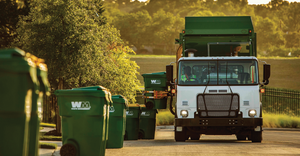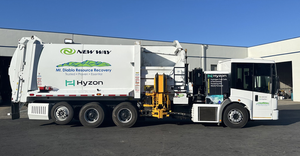Recycling Destroys to Create
Will recycled content requirements solve recycling’s markets problem?
Recycling is inherently destructive. Depending on the product, recycling can involve crushing, grinding, shearing, shredding, shaking, melting at low temperatures or at temperatures close to 3,000 degrees Fahrenheit. All of this in order to make a new product. Recycling destroys to create.
We do this to recyclables in good times and in bad times. Bad markets, such as the one we are currently experiencing, are a brutal reminder that recyclables are just raw materials. Nothing more and nothing less. Without end markets, our recycling efforts are rendered futile.
We respond to bad markets by looking for ways to expand existing markets or to create new ones. Mandating recycled content for products is a popular solution. After all, if manufacturers are required to use recycled raw materials, won’t markets expand and prices rise to meet the new demand?
A few recycled content requirements exist at the state level. These include garbage bags, glass bottles and rigid plastic containers (partially) in California. At one time, at least 10 states and the District of Columbia had minimum content requirements for newsprint (the paper used to print newspapers).
The California laws helped create markets, but not stable prices. So did the newsprint laws. Those 10 states were spread around the country and had 30 percent of our population. Their laws had a national impact.
Prices for recycled newspapers boomed in 1995 as new mills competed for raw materials. But the recycled content laws were not the only factor. Technological changes enabled recycled newsprint mills to improve their product. Their paper could now run on newspaper presses at high production speeds without tearing. Colored inks could print evenly without bleeding into the page. The newspaper industry felt more confident about using recycled content newsprint than ever before.
Yet within a decade, the newspaper industry began its long decline. Many of the new mills closed or were converted to making paper for packages. Recycled content laws couldn’t prevent changes in technology and the products and materials we use in our daily lives.
Recycled content laws run into another problem. No material is “infinitely” or “100 percent” recyclable except in the minds of its marketing department. Product loss occurs both during processing and remanufacturing.
During processing, “yield loss” occurs when bales of plastic, metal or paper recyclables and loads of glass are taken apart at end markets. They will inevitably contain a variety of contaminants (caps, labels, dyes, other pigments, ceramics, food or liquids, etc.). Estimates of yield loss in the 30 percent plus range are not uncommon. The newly released Recycling Partnership report “The Bridge to Circularity” estimates that 1.6 billion pounds of PET are needed to produce 1.1 billion pounds of bottle-grade recycled PET.
Product loss also occurs in the remanufacturing stage. Paper fibers are cut every time they are recycled. Generally speaking, by the sixth or seventh time, they are too short to be useful. Paper can be recycled a lot, but not infinitely. Virgin fibers are necessary for paper products to meet their customers’ needs. PET can become discolored and lose its strength after being recycled several times. Smaller pieces of glass and metal will be lost in the furnace as they are consumed by its heat.
State legislators are showing increased interest in recycled content laws. A recent New York State proposal would require all single use plastic containers to have 75 percent recycled content. I have no doubt the sponsor is sincere in his goals. But if enacted, the bill will cause more problems than it could solve.
The first problem is that it will simply shift demand from one buyer to another. A recycled content requirement for PET bottles will result in more recycled PET resin for those products at the expense of existing fiber and other users. We need to expand markets, not shuffle them around.
The second problem is that it sets unrealistic expectations. Where will all the recyclable plastic come from? How much is needed? How much will survive the recycling process?
Recycling content mandates can be useful. But they won’t solve the problems of recycling markets. Recyclables will remain commodities subject to the realities of supply and demand. Instead of aspirational legislative goals, let’s ensure that new mandates will be based on what can be achieved. We need to ensure that all uses increase and not just shift recyclables from one product to another. We need to accept the reality of commodity markets.
Let’s be smart. It’s good to shoot for the stars, but getting there won’t be a quick or easy journey.
Chaz Miller is a longtime veteran of the waste and recycling industry. He can be reached at [email protected].
About the Author
You May Also Like




